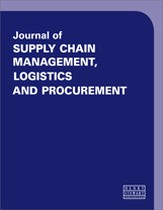A comprehensive solution strategy for right-sized packaging
Abstract
Small parcel carriers are now basing shipping charges primarily on the dimensions of shipping cartons rather than the weight of packed cartons. Consequently, reducing wasted space in cartons can result in significant savings in shipping costs as well as corrugated material and dunnage costs. Most companies maintain a relatively small number of carton sizes, so the opportunity to select a carton to contain order items with a small amount of empty space is limited. Furthermore, choosing the best carton to pack items, either before or after they have been picked, is difficult for packers using the ‘eyeball’ method of selection and often requires repacking, which further adds to costs. Maintaining a large number of different carton sizes (eg 40+) increases the likelihood that a carton selected for packing will have minimal wasted space. This paper describes the challenges and artificial intelligence (AI)-based solutions developed to enable the determination of which carton sizes to maintain in a large set of different carton sizes, automatically calculate the best carton(s) for packing an order from the large set, quickly identify the best carton for a packer, efficiently replenish consumed cartons from a carton supply area, and simplify vendor managed inventory (VMI) by a carton supplier to enable frequent delivery of replenishment cartons.
The full article is available to subscribers to the journal.
Author's Biography
John C. Peck PhD was a Professor of computer science at Clemson University, serving twice as department head before he retired. He created the Clemson Division of Information Systems Development, where he was responsible for a staff who designed and developed information systems for the state of South Carolina, including Medicaid management information, food stamps, mental health, Title IVD and online DHEC health information systems. Additionally, Jack founded the Clemson Apparel Research Laboratory, funded for more than 15 years by the US Department of Defense, with a mission of developing advanced manufacturing systems for producing critical apparel products. Jack published numerous professional papers and was issued two patents in speech technology that enabled disabled people to talk to their sewing machines as alternatives to using their legs to control the machines. After retiring from Clemson, Jack joined Foxfire Technologies Corporation, a company he founded in 1987, where he designed and developed real-time shop floor control systems for manufacturing and warehouse management systems. Jack sold Foxfire in 2007 and started FastFetch Corporation, a company that designs and implements hardware and software targeted at fast and accurate order fulfilment in distribution centres. While at FastFetch, Jack was granted four US patents, numerous international patents, and has two US patents pending. FastFetch has been recognised by MHI and CSCMP, two of the most prestigious professional organisations in the distribution industry, as one of the five most innovative companies in the US in their annual innovation competitions. In 2019 FastFetch Corporation and Snap-On Tools LLC, a FastFetch client, were the recipients of CSCMP’s Innovation of the Year award in a national competition.
Edward W. Page PhD is a co-founder of FastFetch Corporation. He has extensive engineering and management experience in a variety of industry, government and university positions. He holds a BS degree in electrical engineering from Clemson University, an MS degree in engineering from the University of Alabama-Huntsville and a PhD degree in electrical engineering from Duke University. He began his engineering career with Teledyne Brown Engineering in Huntsville, AL, where he worked on ground support electronics for NASA’s Apollo Program. He held engineering positions at the US Army Missile Command as well as the Research Triangle Institute before beginning an academic career as an Assistant Professor of electrical engineering at Rice University. In 1975, he joined Clemson University where he served in several roles, including Professor of computer science, Associate Dean of engineering and science and Executive Director of the Clemson University Research Foundation. Edward has extensive research experience in artificial intelligence and biologically inspired computing paradigms and has served as principal or co-principal investigator on a variety of research projects sponsored by both government and industry organisations. He has also served as a consultant to several government and industry organisations, has published more than 60 papers and authored a book on microcomputer architecture. Edward was the chief hardware designer for FastFetch’s product line and continues to play an active role in R&D activities at FastFetch.
James A. Bate PhD is Vice President for software development at FastFetch Corporation. He earned a BS in mathematics from Bob Jones University and MS and PhD degrees in mathematics from Clemson University. He worked for three years at J. P. Stevens, Inc. implementing IBM’s business system planning and organising an operations research group. After leaving J. P. Stevens, Jim was a contractor for QS Systems, executing a vital records system for the state of Wisconsin and a payroll system for the state of Oklahoma. In 1983, Jim returned to Clemson University as an Associate Professor in the computer science department. In 1985, he joined Integrated Support Systems, where he led programming of a logistics system for the US Air Force. In 1989, Jim joined Foxfire Technologies Corporation, where he was responsible for creating and maintaining a real-time shop floor control system and a warehouse management system that were central to Foxfire’s product line. Jim has been with FastFetch Corporation since 2008 and is the chief software developer for FastFetch’s order fulfilment products.
Citation
Peck, John C., Page, Edward W. and Bate, James A. (2023, March 1). A comprehensive solution strategy for right-sized packaging. In the Journal of Supply Chain Management, Logistics and Procurement, Volume 5, Issue 3. https://doi.org/10.69554/CZUP3564.Publications LLP
